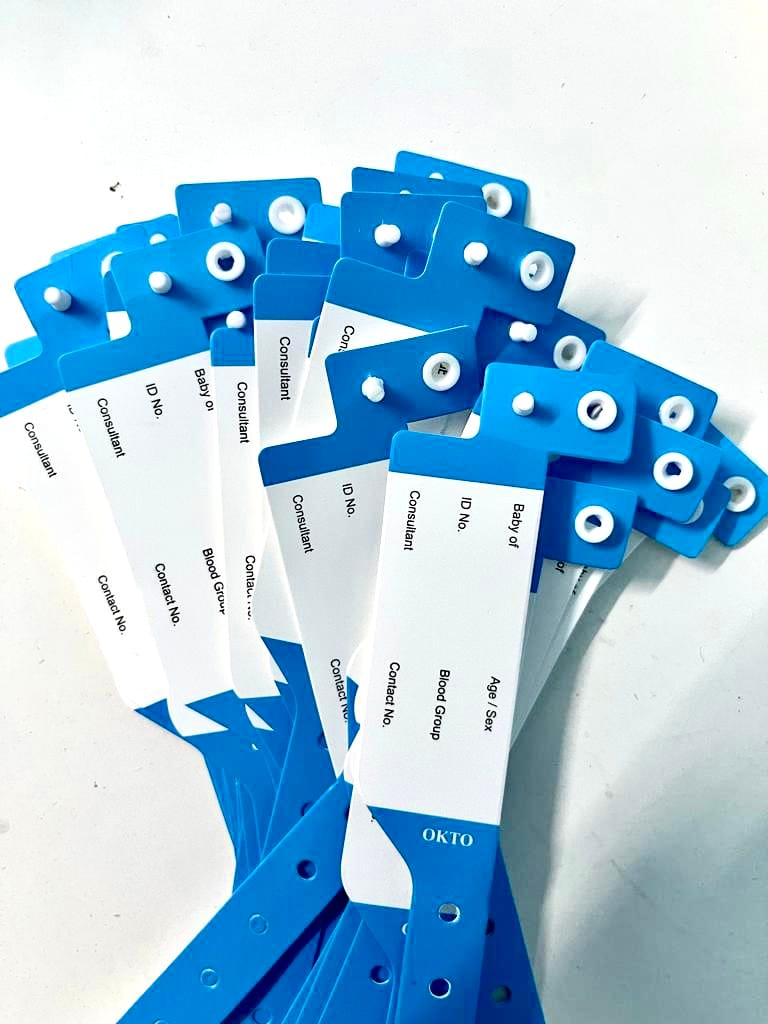Enhancing Patient Care With Reliable Identification Bands
The execution of reliable recognition bands is a crucial component in boosting client treatment within healthcare settings. As the landscape of patient identification advances, one should think about the implications of these systems on total medical care delivery and individual results.
Value of Patient Identification
Making certain accurate patient identification is vital in healthcare settings, as it directly impacts the safety and high quality of treatment offered. Misidentification can cause serious errors, including providing the incorrect medication, executing incorrect procedures, or miscommunicating essential patient information. Such mistakes not just threaten patient safety but can likewise result in legal implications and decreased rely on medical care systems.
Effective person recognition is fundamental to establishing a safe setting where clients receive ideal and customized care. It facilitates the precise documentation of case histories, allergies, and treatment strategies, making certain that doctor have access to important information at all times. Furthermore, robust identification procedures help improve interaction amongst clinical team, improving partnership and lowering the risk of errors.

Types of Recognition Bands
Recognition bands play a critical function in preserving precise person records and boosting safety and security within health care settings. Different sorts of recognition bands are made use of to cater to the details requirements and requirements of various patient populations.

One more kind is the ankle band, which is specifically useful for babies and infants, ensuring that identification continues to be undamaged also throughout treatment treatments. Specialized bands, such as those for allergy alerts or fall risk indicators, supply added layers of security by drawing instant attention to vital person problems.
Just recently, digital identification bands have actually gotten popularity, including barcodes or RFID technology that can be scanned to quickly obtain client information. These bands improve process and minimize the danger of human error throughout individual recognition procedures.
Advantages of Effective Identification
Effective identification of people via the usage of identification bands adds dramatically to general client security and care high quality. By making certain that each client is properly identified, doctor can effectively match clinical therapies and treatments to the appropriate person, decreasing the threat of mistakes. This is specifically vital in settings with high client turn over, where the possibility for misidentification is better.
Additionally, efficient recognition bands boost interaction amongst health care groups. Accurate and clear person identification cultivates partnership and ensures that all group participants recognize a client's details needs and case history. This interaction is important for providing worked with care, specifically in emergency situation circumstances where time is crucial.

Eventually, reliable recognition with using recognition bands not only safeguards people yet also advertises a culture of security within health care facilities (Patient Identification Band). By focusing on exact recognition, medical care organizations can improve results and boost the general client experience
Applying Recognition Solutions
While the value of individual identification is well acknowledged, the application of durable recognition systems presents a complex difficulty for medical care organizations. Establishing reliable recognition systems needs a comprehensive method, including innovation, employees training, and procedure assimilation.
First, companies must choose suitable identification modern technologies, such as barcode scanning, RFID, or biometric systems. Patient Identification Band. These modern technologies must be reviewed based on expense, use, and compatibility with existing infrastructure. A pilot program can aid recognize potential problems before full-blown implementation
Following, detailed training for staff is crucial. All employees must recognize the significance of precise individual identification and be efficient in using the chosen technologies. Regular training updates and analyses can enhance finest methods and ensure ongoing conformity.
Additionally, health care companies ought to create standardized procedures for person identification across all departments, improving and minimizing discrepancies communication. Regular audits can aid recognize voids in adherence to these protocols.

Inevitably, an efficient execution of identification systems not just boosts patient safety but also cultivates a society of accountability and persistance within healthcare settings, making sure trustworthy and regular patient treatment.
Future Trends in Patient Recognition
Improvements in innovation are readied to change person recognition practices in medical care settings. The combination of biometric recognition approaches, such as fingerprinting and facial recognition, is anticipated to enhance accuracy and safety. These modern technologies can substantially lower the threat of misidentification, ensuring that people receive the proper therapies and medications.
In addition, the application of blockchain innovation for this content person records is gaining grip. This decentralized strategy can give a tamper-proof and safe and secure method for managing client identities, thereby enhancing access to important information across various doctor.
An additional pattern is the increasing usage of mobile health and wellness applications that leverage QR codes for client recognition. These applications permit for real-time updates and very easy access to client information, empowering health care experts to make enlightened choices swiftly.
In addition, artificial knowledge (AI) is poised to play an essential role in assessing patient identification information, recognizing patterns, and predicting potential identification errors prior to they occur.
As these technologies advance, they guarantee not only to enhance person security however additionally to enhance the total efficiency of health care distribution systems. Accepting these technologies will certainly be essential for future-proofing patient care practices.
Final Thought
Finally, reliable identification bands are necessary for improving person safety and security and care high quality within health care setups. By reducing the risks related to misidentification, these bands assist in prompt and exact details retrieval, eventually enhancing interaction a knockout post among doctor. The execution of robust identification systems not only cultivates a culture of safety and security but likewise placements health care establishments to adapt to future patterns in patient identification technology, making sure ideal end results for individuals in diverse professional atmospheres.
As the landscape of client identification develops, one need to take into consideration the effects of these systems on general medical care delivery and individual results.Reliable patient identification is essential to establishing a secure environment where patients obtain appropriate and personalized care. Ultimately, prioritizing efficient individual identification methods not just fosters a culture of safety and security yet likewise contributes to boosted person results and total fulfillment with healthcare solutions.
Reliable identification of clients with the use of recognition bands contributes dramatically to general individual safety and security and care high quality. The application of robust identification systems not just cultivates a society of security but additionally settings healthcare organizations to adjust to future fads in patient recognition modern technology, guaranteeing ideal results for people in diverse medical atmospheres.